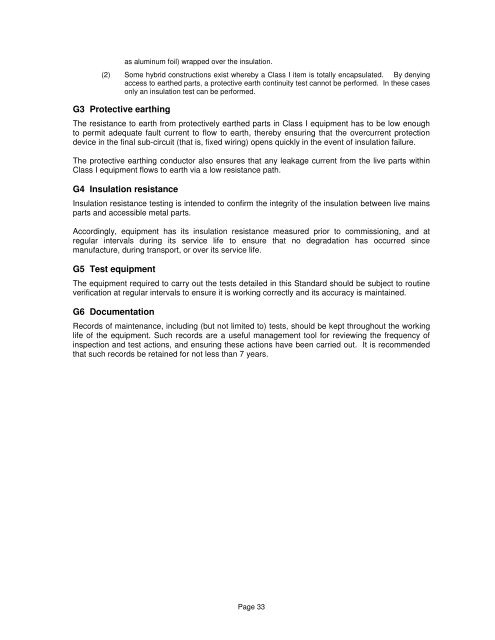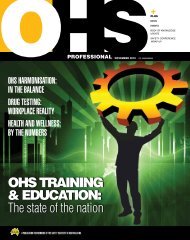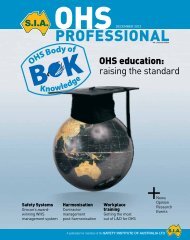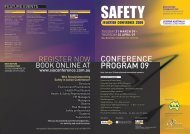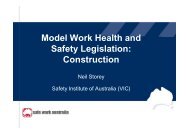In-service safety inspection and testing of electrical equipment
In-service safety inspection and testing of electrical equipment
In-service safety inspection and testing of electrical equipment
Create successful ePaper yourself
Turn your PDF publications into a flip-book with our unique Google optimized e-Paper software.
as aluminum foil) wrapped over the insulation.(2) Some hybrid constructions exist whereby a Class I item is totally encapsulated. By denyingaccess to earthed parts, a protective earth continuity test cannot be performed. <strong>In</strong> these casesonly an insulation test can be performed.G3 Protective earthingThe resistance to earth from protectively earthed parts in Class I <strong>equipment</strong> has to be low enoughto permit adequate fault current to flow to earth, thereby ensuring that the overcurrent protectiondevice in the final sub-circuit (that is, fixed wiring) opens quickly in the event <strong>of</strong> insulation failure.The protective earthing conductor also ensures that any leakage current from the live parts withinClass I <strong>equipment</strong> flows to earth via a low resistance path.G4 <strong>In</strong>sulation resistance<strong>In</strong>sulation resistance <strong>testing</strong> is intended to confirm the integrity <strong>of</strong> the insulation between live mainsparts <strong>and</strong> accessible metal parts.Accordingly, <strong>equipment</strong> has its insulation resistance measured prior to commissioning, <strong>and</strong> atregular intervals during its <strong>service</strong> life to ensure that no degradation has occurred sincemanufacture, during transport, or over its <strong>service</strong> life.G5 Test <strong>equipment</strong>The <strong>equipment</strong> required to carry out the tests detailed in this St<strong>and</strong>ard should be subject to routineverification at regular intervals to ensure it is working correctly <strong>and</strong> its accuracy is maintained.G6 DocumentationRecords <strong>of</strong> maintenance, including (but not limited to) tests, should be kept throughout the workinglife <strong>of</strong> the <strong>equipment</strong>. Such records are a useful management tool for reviewing the frequency <strong>of</strong><strong>inspection</strong> <strong>and</strong> test actions, <strong>and</strong> ensuring these actions have been carried out. It is recommendedthat such records be retained for not less than 7 years.Page 33


